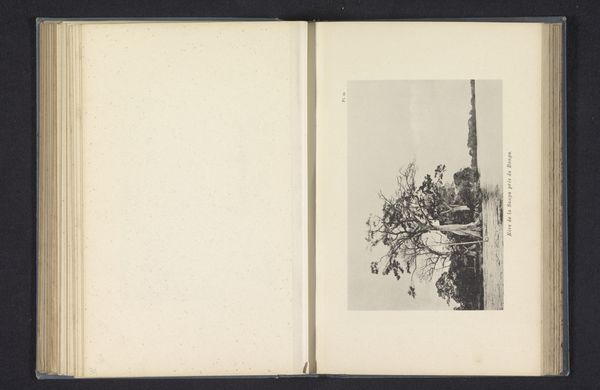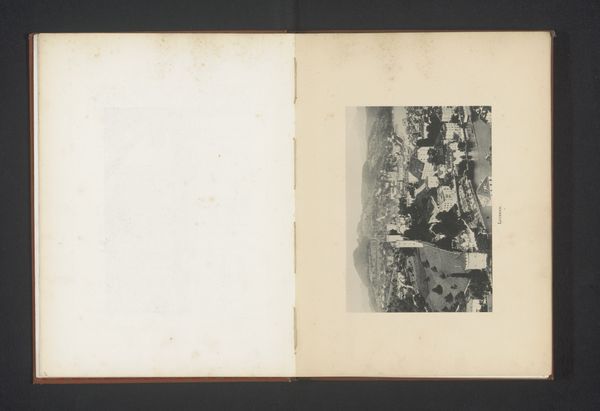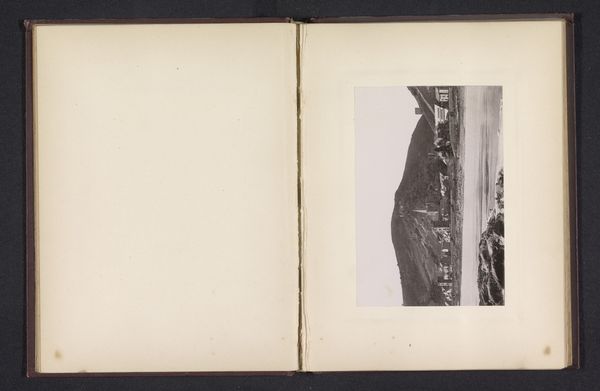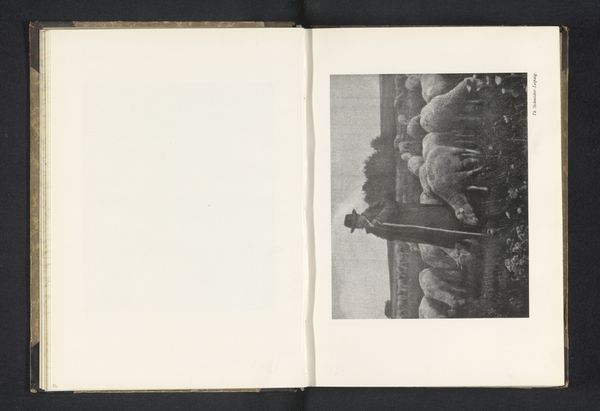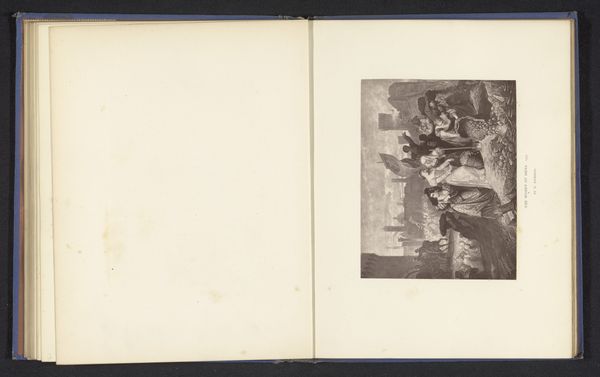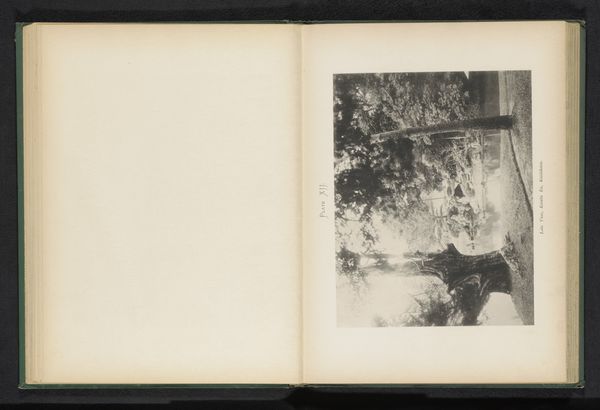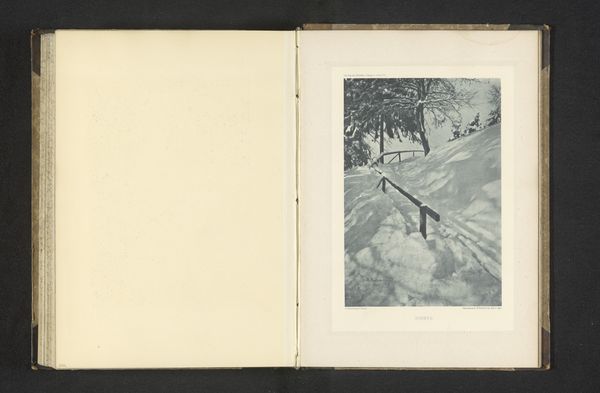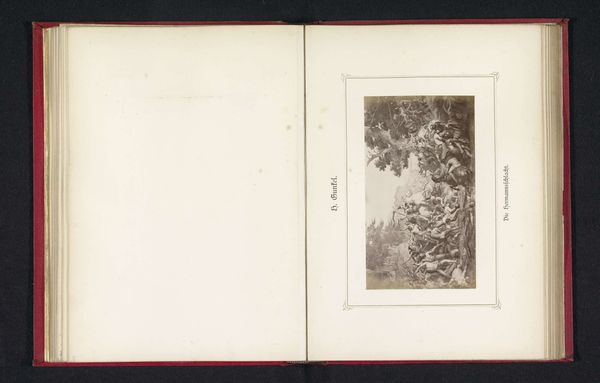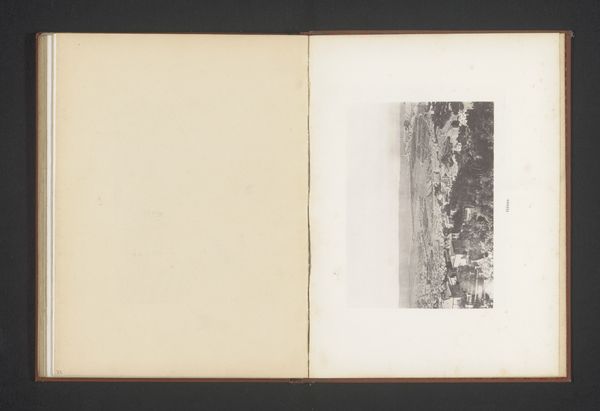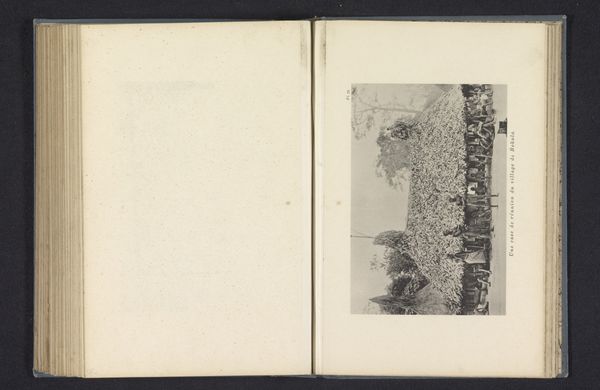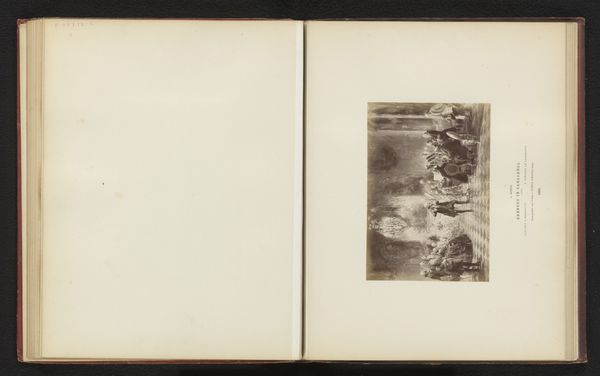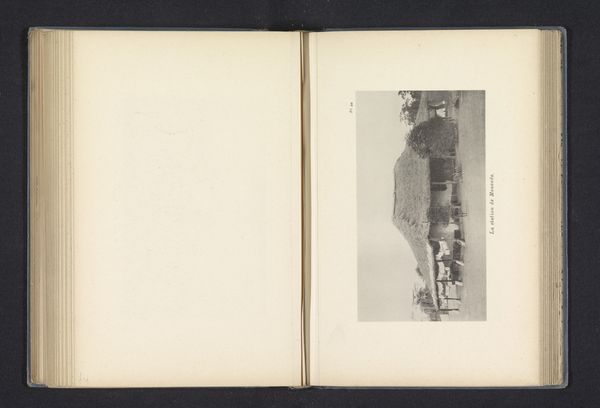
photography, gelatin-silver-print, albumen-print
#
homemade paper
#
script typography
#
hand drawn type
#
landscape
#
river
#
photography
#
hand-drawn typeface
#
fading type
#
gelatin-silver-print
#
thick font
#
white font
#
delicate typography
#
albumen-print
#
realism
#
historical font
#
small font
Dimensions: height 101 mm, width 152 mm
Copyright: Rijks Museum: Open Domain
Curator: This is an albumen silver print, titled "Gezicht op Remagen en de Rijn", or "View of Remagen on the Rhine," dating roughly from 1881 to 1891. Editor: There's an unexpected intimacy in the framing. The print itself is relatively small on the page, making it feel almost like a personal memento carefully preserved. Curator: Precisely. Albumen prints like this one, used extensively during that period, are key to understanding how photography democratized image-making. It allowed for mass production, bringing landscapes and portraits to a broader public. Editor: This accessibility shifted the power dynamic. Photography was no longer just for the elite but a medium for documenting daily life, reinforcing or challenging class narratives based on who had the resources and what got seen or unseen within that framework. The Rhine would also have political relevance. Curator: True. And consider the labor involved—preparing the glass negatives, the darkroom processes, and the specific skill required for albumen printing itself, an alternative process with a very specific result based on materials used. There's artistry beyond the simple click of a shutter. Editor: Absolutely, the meticulous work behind each print also allowed photographic production of sites linked to colonial administration, cultural tourism or sites with strategic meaning—like the Rhine, during the rise of the Prussian Empire and the German nation. These were often bound in albums, to solidify narratives, of places and people, shaping public perception. What this image would have circulated with. What that process says, alongside the final image. Curator: Exactly. Plus, let's not forget that the inclusion of this photograph into an album elevates the craft involved. Each step—from creating the print to adding it into a bound form—contributes to the final product's significance. It goes beyond mere reproducibility. Editor: Ultimately, seeing a view like this within an album—like glimpsing into someone's memory or intention. I keep thinking about the viewer that it may have been intended for, as well. Curator: Yes, looking at this "View of Remagen," knowing the intricacies of the processes involved provides a richer appreciation for both the art and the labor involved. Editor: Definitely, I come away pondering the interplay of production and the layers of visual stories being shared with a clear intention, a selected truth about a people or place.
Comments
No comments
Be the first to comment and join the conversation on the ultimate creative platform.
